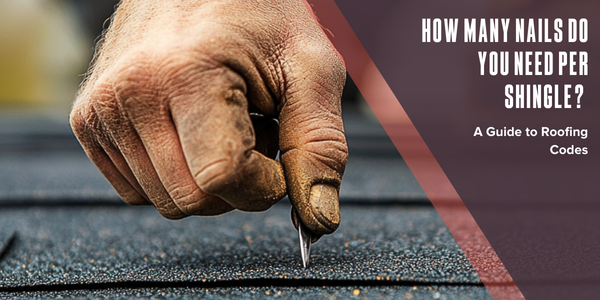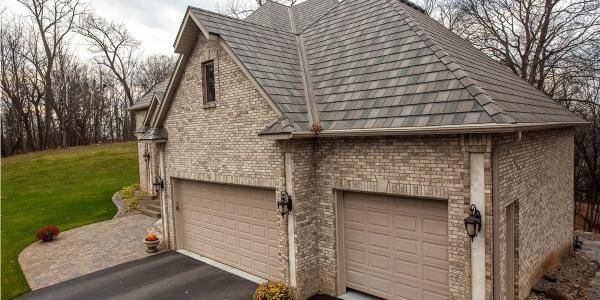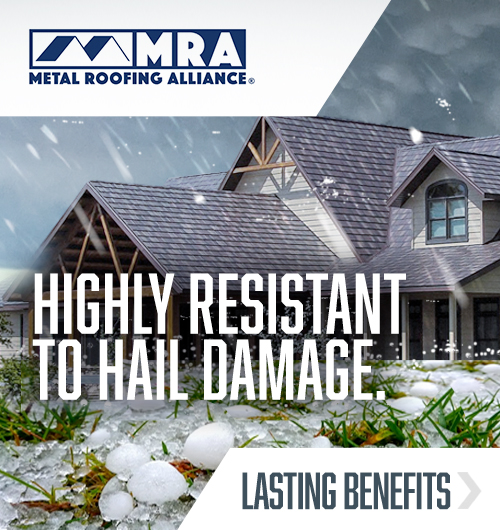How many nails do you need per shingle?
March 27, 2025 at 6:00 a.m.By Roland Mitchell, Kore Roofing.
A guide to roofing codes.
Editor's note: The following is information about how contractors adhere to building codes in terms of the amount of nails needed per shingle. Building codes vary depending on your location, so the information provided in this article might be different from the building codes and requirements where you live.
I’m Roland Mitchell from Kore Roofing, a local roofing company in Scottsdale, Arizona. I’ve been roofing under the sun for four decades. I’ve seen scorching heat waves, violent monsoon downpours and enough UV damage to make most folks’ heads spin. If there’s one question I get all the time, besides, “How do you handle this heat?” it’s “Roland, how many nails do I need per shingle?” Well, buckle up, because we’re about to cover everything you need to know about nailing down shingles the right way.
1 - Breakdown of roofing code requirements
Unique warm climate challenges
Unlike some states that follow a single set of rules, state's with warmer climates got a bit of a “local flavor” when it comes to building codes. Sure, we rely heavily on the International Residential Code (IRC), but because of our triple threat intense heat, UV exposure and seasonal monsoon winds you’ll see local tweaks depending on the county or city.
Standard and high-wind areas
- 4 nails per shingle (Standard): If you’re in a low-wind zone (think some suburban areas where tall buildings or nearby hills break up the wind), four nails per shingle usually meets the code.
- 6 nails per shingle (High-Wind zones): But if you’re out in the open desert or in regions that get hammered by high monsoon gusts, expect local codes to say six nails. Trust me, you don’t want a fierce monsoon ripping the shingles off your roof. That’s a headache you can avoid with a few extra nails.
Other roofing materials
Now, you might not be using standard asphalt shingles, some folks go for metal, tile or those fancy new synthetic shingles. Each of these materials comes with its own set of fastening rules. Metal panels might use screws, while tile might rely on special clips or adhesives in addition to nails. My best piece of advice: always check the manufacturer’s instructions and your local codes.
2 - Explanation of the IRC standard versus local county variations
The IRC standard
The IRC (International Residential Code) is what most of the country uses as a baseline. It calls for a minimum of four nails per shingle for standard conditions, and bumps it up to six nails per shingle in high-wind zones. Sounds simple, right?
Local spins on the rules
Every county (and often each city) can put its own spin on the rules:
- Typically aligns with the IRC. But some neighborhoods with fewer wind barriers, or spots out in the open desert, might require more nails, sometimes five or even six per shingle, to keep those roofs from peeling like a bad sunburn.
- Follows the IRC. But up in foothills or canyons where wind can whip through like a freight train, you might see stricter nailing requirements.
- Higher elevations mean more snow and heavier wind loads, so don’t be surprised if local inspectors call for extra nails or specialized fastening systems for snow loads.
Big takeaway? Always check with your local building department. Even if the county’s set on one rule, the city you’re in might enforce something more specific.
3 - Why nail count matters for durability
Wind resistance
I’ve seen one strong gust pop off poorly secured shingles like they were playing cards. If your roofer skimped on nails, all it takes is one monsoon storm to turn your roof into a jigsaw puzzle missing half its pieces. More nails = more holding power.
Preventing leaks
When shingles flap around even a little water can sneak in underneath. Over time, that can soak your roof deck, ruin insulation and lead to mold or other pricey damage. Trust me, dealing with that is no fun and no cheap fix.
Manufacturer’s warranty
Most shingle makers aren’t shy about telling you how many nails their product needs. Ignore that, and you risk saying “bye-bye” to your warranty. If something goes wrong and they find out you shorted the nail count, you’re on your own for repairs.
Saving money in the long run
I know how it goes. Everyone wants to cut corners to save a few bucks. But using the right number of nails up front (even if that means buying another box or two) can save thousands in damage control later. Think of it as cheap insurance.
Wrapping it up
So, how many nails per shingle do you really need? Anywhere from four to six but the exact number depends on your local building department, whether you’re in a high-wind zone and what your shingle manufacturer calls for.
Take it from a guy who’s been roofing under the blazing sun for 40 years: don’t cut corners on nailing. It’s a simple step that’ll keep your roof tight, your home dry and your wallet happier in the long run.
If you’re not sure what applies to your area, call your local building department or talk to a trusted roofing pro. When done right, a good roof can outlast your neighbor’s AC unit and you’ll sleep easy knowing it’s nailed down the way it should be.
Disclaimer: The information provided on AskARoofer.com or information sent by emails is the opinion of the writers. It is the responsibility of the reader to check for accuracy in one's own jurisdiction, as there are different codes and restrictions for different parts of the country. AskARoofer.com does not accept any liability for the use of information on this website or email. AskARoofer.com has no controls over product failures, installation, or climate conditions that may change the roofing process in your area. Our information is in general to our area and cannot be the same as your local town or state. It is advised to seek the local Building Department, Licensed Contractor and local Product Representative for proper installation requirements and code enforcement when installing a new roof.
Have a question? AskARoofer.
Find your local roofing contractor in the RoofersCoffeeShop® Contractor Directory.










Comments
Leave a Reply
Have an account? Login to leave a comment!
Sign In